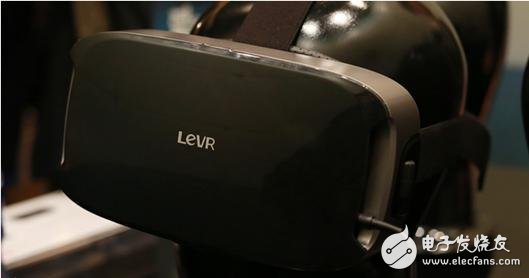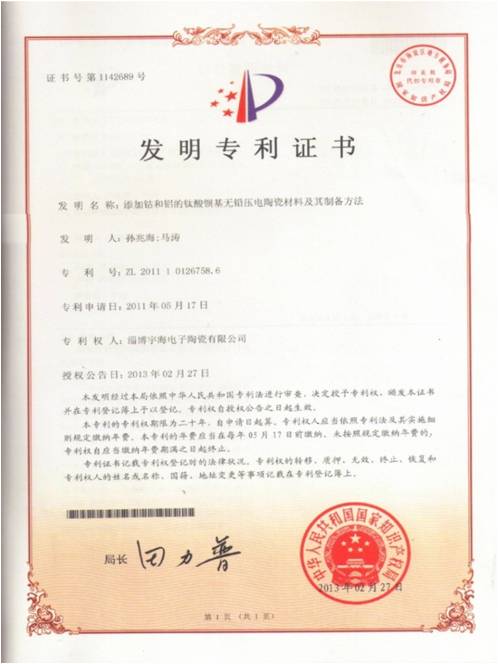In recent years, VR is one of the most anticipated development directions of product technology, and it is also an active area for major Internet companies and technology giants. Competitors such as Cool Open, Xiaomi, and LeTV, which have been violently killed in the Internet TV market, have also released their own VR products and strategies since last year.
So, the same is the entry into the VR market, what are the similarities and differences between the three in terms of products and strategy? Who wins is bigger? The East Building may wish to comprehensively analyze and interpret:
From product to strategy, Cool Kai and Xiaomi LeTV "run in the opposite direction"

LeEco LeVR COOL1
First of all, from the product point of view, among the three manufacturers, the first to introduce VR products is LeTV. It officially released the VR helmet LeVR COOL1 with a price of 149 yuan on December 23, 2015; Xiaomi was informal in August this year. The toy version of VR glasses, which is priced at 49 yuan, was released. According to the official website, the Xiaomi VR glasses toy version is actually a simple mobile phone box. Then, in October of this year, Xiaomi and Cool Kai released their VR products separately. The difference is that Xiaomi released an upgraded version of VR glasses for 199 yuan, and the cool development cloth is two more powerful VR all-in-one products "free door" G1 and G1s, which sell for 3999 yuan. Start.

Millet VR glasses official version
As we all know, VR glasses and VR helmets are basically one type of products, which need to be used with mobile phones, but cannot be used alone. The VR all-in-one is a combination of software and hardware, with more powerful functions and independent use. Obviously, the three companies that competed fiercely in the Internet TV field, such as Cool Open, LeTV and Xiaomi, have launched their VR products, but there is a big gap in product layout. From the perspective of Xiaomi and LeTV, which are just simple products such as VR glasses or VR helmets, the two may be “spotting water†in the VR market. On the contrary, the cool-opening VR all-in-one machine has higher production difficulty and manufacturing cost. As soon as you enter the VR market, you will launch a powerful and better-performing product, demonstrating its determination to enter the VR market.

Cool open VR free door G1
Secondly, in addition to the successive launch of VR products, the three manufacturers have separately developed their VR strategy. LeTV is still the earliest VR strategy. It hopes to integrate the VR content source, platform and terminal through the vertical integration of the value chain, just like its video content. This is in line with its consistent ecological concept. Cool Open also revealed its strategy as early as May this year. The layout of the VR strategy is to play a strong content operation capability for the Cool Open system, amplify user value, and provide differentiated content services for users. At the same time, Kukai said that it will provide customized services to meet the individual needs of different companies. Although Xiaomi does not clarify its strategy at present, it can be seen that the exploration of VR products depends on the layout of eco-chain enterprises, which is not the current focus of Xiaomi Company.
Cool open, LeTV, Xiaomi, who has a big chance of winning?
On the other hand, as mentioned above, there are many differences in product and strategy between the three manufacturers, such as Kukai, LeTV and Xiaomi. Then, with regard to the current product layout and strategic planning, who are the winners of these three manufacturers? What?
First of all, compared to the introduction of one or two hundred yuan "toy nature" VR glasses or helmets of Xiaomi LeTV, the cool open VR machine price of 3999 yuan can be described as quite bold. However, at present, in the VR market, tens of dollars or hundreds of dollars of VR glasses or helmets are almost inundated, but few products that can be sold and have a good reputation. This is mainly because low-cost VR products can attract some people to buy early adopters, but the experience is not good enough to form a positive reputation. On the other hand, the low-priced VR products naturally have low manufacturing costs. At present, VR products need to be innovative and perfect in terms of technology and content. The low price can not support the higher product cost, and even less. Ensuring that VR vendors have sufficient profits to develop and experience better products, which makes the current evolution of VR products stand still, and makes VR products always confined to a small market space, unable to form a truly universal product.
Therefore, in terms of the current VR market, the price may not be the first factor affecting consumers' purchase and use, and a good product experience may be the real reason. Therefore, it is perhaps the embodiment of the market-based approach to differentiate its products by launching a VR product with better experience and higher configuration.
Secondly, when talking about the experience of VR products, it is mainly reflected in the inconvenient use, insufficient content, insufficient playback, and short standby time. For example, Xiaomi VR glasses or LeTV helmets need to be used with mobile phones of the specified size, which greatly limits the use of the products. The lack of VR content is difficult to mobilize the user's buying interest, and the layout of VR content in VR content continues its "big content" strategy in Internet TV, also through education, health, tourism, shopping, Excellent strategic partners, such as games, cooperate to introduce rich content and form a differentiated all-round content advantage. In addition, the playback is not smooth enough, the standby time is too short and other issues are hardware configuration, and according to the data display, the cool open VR all-in-one uses the Qualcomm Snapdragon 820 processor, and with 4GB of Grand Canal save +64GB storage space. Equipped with dual independent optical system, using image output technology and supporting fast charging, these powerful functional configurations have undoubtedly solved the problem of poor experience of previous VR products.
On the other hand, when it comes to the differences in products and strategies between Xiaomi, LeTV and Cooler, in the final analysis, the market positioning is different. Compared with Xiaomi and LeTV's ambiguity in market positioning, Coolcom's strategic positioning in the VR market is clearer and more determined. On the one hand, in the eyes of Cool, the future VR and TV will become an important part of the user's life entertainment. Therefore, Coca-Cola’s commitment to the VR market is even greater. Li Jing, the head of the VR & AR business unit, said at the strategy launch conference of the cool-open big-screen new value platform in May that it will be combined with cool opening. The advantages of its own resources integration, through the integration of content, users, background integration and operation, a full range of layout VR. On the other hand, Cool Open has long indicated that it will not be limited to the living room entertainment market, but will expand the use of VR products from all aspects. “Cool will also start from the fields of film and television, games, tourism, education, etc., and join powerful content partners to apply VR technology to various vertical fields to change our lives and the world.†Li Jing has even said so. .
Obviously, compared with the red sea in the consumer market and the serious homogenization phenomenon, there are obviously more potentials for the application of industrial scenes based on VR technology and products. For example, in the field of education, the application of VR technology will enable users to have a stronger sense of presence and interaction; for example, in the real estate sector, based on the portability of VR products, real estate sales can be potential consumption in the mall, in the community or in the factory. The place where the sales are carried out. In this way, the combination of VR technology and these industries, like the Internetization of these industries, has brought new ways of playing to these industries. In the above mentioned scenes, Cool Open is one step ahead of LeTV Xiaomi. At present, it has been launched, and it can provide personalized service for enterprises through one-to-one customization. At present, it has reached a strategic partnership with VR+ industry leaders such as Meifang Yunke, Zhixue Education, and Huilian.
In summary, compared with the layout of the three VR products and strategies, Xiaomi and LeTV also tend to test the water consumption consumer market, and in addition to using VR products to actively deploy the living room entertainment market, there is also an intention to enterprise level. The market is advancing, and it is undoubtedly more worth looking forward to in the hope of being able to capture the industry's application scenarios.
Lead Free Piezoelectric Elements
The Co-Al Co-doped Barium Titanate
Lead-free Piezoelectric Ceramics was successfully developed by Yuhai company
through repeated experiments. By Researching the influence of Co-Al Co-doping
on the structure and properties of Barium Titanate-based piezoelectric
ceramics, the formulation and preparation technology of Barium Titanate-based
piezoelectric ceramics were optimized. Yuhai`s BaTiO3 was prepared by conventional
solid-phase sintering method, with the piezoelectric constant d33 (>170pC/N),
dielectric loss tgδ≤0.5% and mechanical coupling coefficient Kp≥0.34.
Barium titanate lead-free piezoelectric
ceramics are important basic materials for the development of modern science
and technology, which was widely used in the manufacture of ultrasonic
transducers, underwater acoustic transducers, electroacoustic transducers,
ceramic filters, ceramic transformers, ceramic frequency discriminators, high
voltage generators, infrared detectors, surface acoustic wave devices,
electro-optic devices, ignition and detonation devices, and piezoelectric
gyroscope and so on.
Application: military, ocean, fishery, scientific research,
mine detection, daily life and other fields.
China Patent of Yuhai company`s BaTiO3
Chinese Patent No.: ZL 2011 1
0126758.6
Name: Lead-free Barium Titanate
Piezoelectric Material with Addition of Cobalt and Aluminum
Lead free piezo material BaTiO3
Lead-free Material
Properties
BaTiO3
Dielectric Constant
ɛTr3
1260
Coupling factor
KP
0.34
K31
0.196
K33
0.43
Kt
0.32
Piezoelectric coefficient
d31
10-12m/v
-60
d33
10-12m/v
160
g31
10-3vm/n
-5.4
g33
10-3vm/n
14.3
Frequency coefficients
Np
3180
N1
2280
N3
Nt
2675
Elastic compliance coefficient
Se11
10-12m2/n
8.4
Machanical quality factor
Qm
1200
Dielectric loss factor
Tg δ
%
0.5
Density
Ï
g/cm3
5.6
Curie Temperature
Tc
°C
115
Young's modulus
YE11
<109N/m3
119
Poison Ratio
0.33

Piezo Element,Piezo Ceramic Elements,Piezoelectric Ceramic,Pzt Tubes
Zibo Yuhai Electronic Ceramic Co., Ltd. , https://www.yhpiezo.com